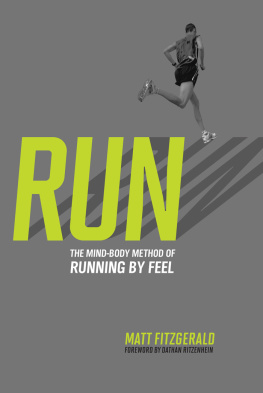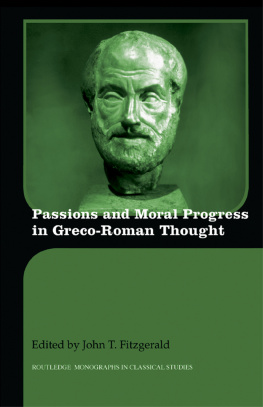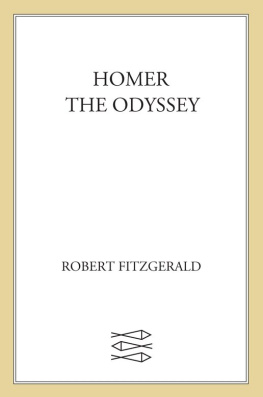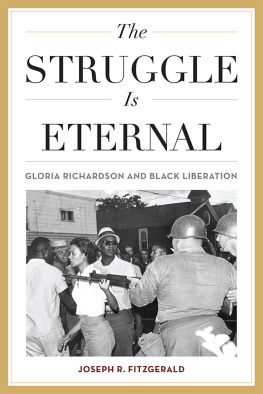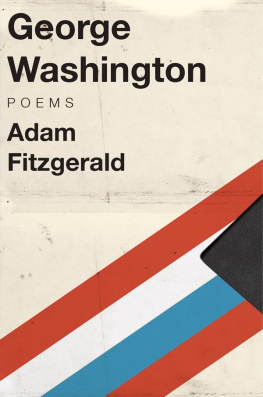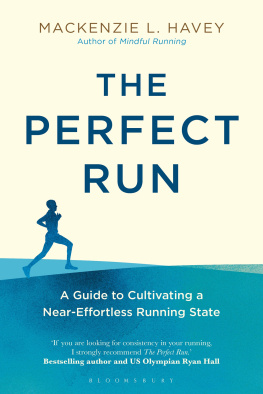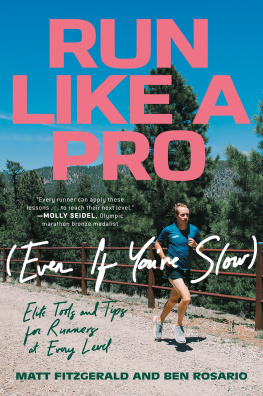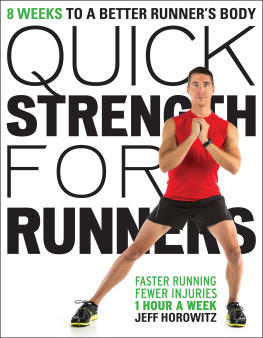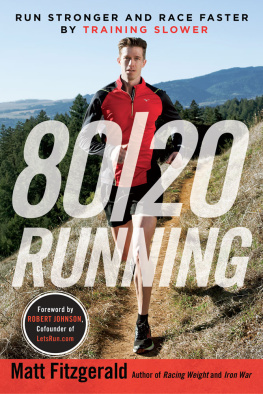
PRAISE FOR RUN
ASICS was on to something when it chose its new name, a Latin abbreviation for a sound mind in a sound body. This philosophy is the key to unlocking all the potential we hold. From my first race in junior high gym class to competing in the 2008 Olympic Marathon, I have found that the stronger my mind and spirit are, the further I am able to push myself. Any runners interested in maximizing potential must study the mind-body connection or their journey will not be complete.
R YAN H ALL , 2008 Olympian and two-time American record holder
The elements and philosophy laid out in Run were fundamental and played an essential role in my overall success throughout my career as a self-coached athlete. The ability to run by feel is a learned skill, and without the capacity to self-assess and adjust your training intuitively, you will inevitably fall short of your potential.
A LAN C ULPEPPER , 2000 and 2004 U.S. Olympian,
sub-4-minute miler, and sub-2:10 marathoner
The coach knows what to do; the scientist tells us why. Fitzgeralds Run artfully and responsibly blends scientifically grounded, supportive research and convincing anecdotal evidence into a message that those of us who take running seriously must heed. Now U.S. athletes can learn the true secrets of the great African runners: That voice in your head that says, Too much, too little, too hard, too easy, despite what the device on your wrist says, is probably right!
B OBBY M C G EE , renowned running coach and author of
Magical Running and Run Workouts for Runners and Triathletes
In his latest book, Matt Fitzgerald successfully explains the mind-body method of running. While this concept can be difficult to understand, Fitzgerald describes it in a way that will speak to beginners and elite runners alike. Anyone trying to improve and realize their true running potential should read Run.
K ARA G OUCHER , 2008 Olympian and World Championship medalist
After years of searching science journals for secret workouts and fitness techniques, Matt Fitzgerald has decided that the brain is the ultimate training tool. In this insightful and evidence-based book, he challenges us to achieve our potential by enjoying every run and race, even as we accept the pain.
A MBY B URFOOT , Runners World editor-at-large
and 1968 Boston Marathon winner
As a longtime proponent of effort-based training, I highly recommend Run. The reader will learn the most important concept in all of traininghow to connect effort with pace. Using the techniques and ideas in this book, runners can expect more consistent training and racing results without the worry of external feedback from devices like GPS and heart rate monitors. I use effort-based training with the beginning runners, middle-of-the-packers, and Olympians I coach, and I recommend that all runners learn this valuable technique.
G REG M C M ILLAN , MS, McMillanRunning.com online coach

Copyright 2010 by Matt Fitzgerald
All rights reserved. Published in the United States of America by VeloPress, a division of Competitor Group, Inc.

3002 Sterling Circle, Suite 100
Boulder, Colorado 80301-2338 USA
(303) 440-0601 Fax (303) 444-6788 E-mail
Distributed in the United States and Canada by Ingram Publisher Services
The Library of Congress has cataloged the printed edition as follows:
Fitzgerald, Matt.
Run: the mind-body method of running by feel / Matt Fitzgerald
p. cm.
ISBN 978-1-934030-57-8 (pbk.: alk. paper); ISBN 978-1-937716-11-0 (e-book)
1. RunningTraining. 2. RunningPhysiological aspects. I. Title.
GV1061.5.F573 2010
612.044dc22
2010008956
For information on purchasing VeloPress books, please call (800) 811-4210, ext. 2138, or visit www.velopress.com.
Cover design by Erin Johnson
Cover photograph of Alan Culpepper by Brad Kaminski
Interior design by Jane Raese
Illustrations in Chapter 11 by Chris Gallevo
V. 3.0
My muscles are the type that need a long time to warm up. And I feel that this type of muscle is connected to the way my mind works. What I mean is, a persons mind is controlled by his body, right? Or is it the oppositethe way your mind works influences the structure of the body? Or do the body and the mind closely influence each other and act on each other?
Haruki Murakami, What I Talk About When I Talk About Running
CONTENTS
FOREWORD
S OMETIMES THE SIMPLEST ANSWER IS THE RIGHT ONE . I have spent many years trying to outthink my competitors and have always looked for the cutting edge. In Run: The Mind-Body Method of Running by Feel, Matt Fitzgerald has identified the scientific reasons for the obvious: We know our bodies best; we just need to know what our bodies are telling us.
There are many industry standards for the components needed to perform at our best, but sometimes applying those pieces to our training can be difficult. Too often we become dependent on literature and specific training models, and we forget common sense. Matt tries to bring us back to that common sense, encouraging us to listen to our bodies and use their signals to adapt our training programs to help us get the most out of them.
Those signals are not just vague, unimportant feelings that have no bearing on how we feel. They are valuable information about what is the best course of action. Matt brings together the most recent research explaining why we might be feeling a certain way at a specific time and what that feeling might be trying to tell us about our training.
Thinking back to my best races and my most consistent training blocks, I can honestly say that I have thrown out the book, so to speak. There were times when I was completely dependent upon measuring everything. I lived by a heart rate monitor. I measured every course I ran, and I never backed off when my body told me I was tired. As Matt acknowledges, all of those tools can be very useful, and at times they are essential to knowing exactly where you are in training. But when they take priority over what your body is telling you, injury and overtraining are just around the corner.
If I had always followed the signals my body was giving me the way Matt instructs, I believe I could have avoided most of the injuries and bouts of overtraining I have had in my career. The signs were obvious before I broke the 5,000 m American record and before I won a bronze medal at the World Half-Marathon Championships: I was listening to my body and following my intuition in training on a daily basis, and when I got to the start line, my confidence was unmatched.
The culture of distance running, especially in the United States, is one of push through the pain and the harder you work, the better. What Matt shows in this book is that there are reasons we feel the way we do, and those indicators can tell us if we are ready for a huge breakthrough or if we are on the cusp of breaking down. Highlighting the experiences of some of the best distance runners in the world, Matt shows what is possible for even the most modest runner. One of the greatest things about distance running is that you can learn the same lessons from your body and mind as can a sub-13-minute 5,000 m runneryou just have to pay attention!
Next page
